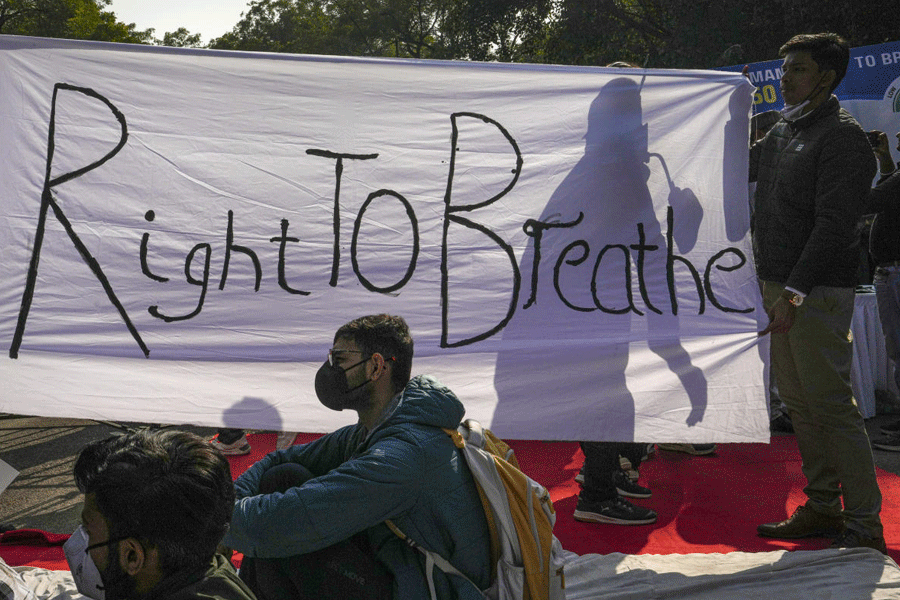A fortnight into the new year and fresher evidence suggests an unequal recovery from the pandemic. Through the past year, economic performance observed from some data was often at variance with other indications of weakness. As a result, speculation arose if the rich have emerged richer after the pandemic and those at the lower end have slipped further down the income ladder. This is the K-conundrum, where the two strokes represent compared groups. The puzzle has persisted because economic data, indicators, and information flows have been distorted and ambiguous — at first, because of pandemic disturbances and, then, on account of the sudden, sharp eruption of inflation. Interpreting data has been difficult as a result, obfuscating accurate inference. Nowhere does such confusion apply more than to knowing about how different sections of the population have fared during these shocks. Policy interventions, after all, are premised on reasonable knowledge and understanding.
The challenge has resurfaced in the first week of this year with robust growth estimates for 2022-23 and a mix of disparate tendencies on the other side. So far though, it appears that there’s more to supplement than contradict the reading that post-pandemic gaps in living standards may have widened. Hints in this regard are similar across a range of high-frequency indications as well as underlying developments in the national accounts.
Here’s a short list validating this inference. Let us begin with sales of consumer durable goods, where the yearto-date trend shows premium products/ consumers as the locomotive of growth. No problems with that except that at the other end, mass categories have grown negatively or contracted, according to major retailers. This trend not only repeats from the preceding year but these firms also expect the top segment to propel their advancement in the forthcoming year as well. They note that inflation has impacted consumer spending. Similar evidence exists in the fast-moving consumer goods sector, where rural markets are reported to have shown no betterment last quarter, which was a festive one. Demand in the countryside was passive due to inflation pressures; their urban counterparts fared better. Sales fell into single digits as a result; revenues increased because of price rise and not volumes.
The story in housing is no different. Like the consumer section where inflation is pinching the mass categories, homebuyers at the lower end display strain. According to real estate agencies compiling such information, affordable housing sales were depressed in 2022. The share of units costing less than Rs 50 lakh declined in the second half over that in 2021; sales of the Rs 50 lakhRs 1 crore segment were also restrained, while the high-end residential segments showed strong momentum and performed very well.
Passenger vehicle sales, a reasonable indicator of aggregate consumer demand, are another sign. In the financial year to the end of 2022, two-wheeler sales were 12% lower than the corresponding pre-pandemic period or April-December 2019; against the 15 lakh sold each month then, the average monthly sale has been lower by a lakh each month (14 lakh) in the matching period of 2022. This is also weighing down the sales of entry-level cars, a commonly observed transition by two-wheeler owners with a rise in living standards or incomes. Again, the contrasting performance of bigger and high-end cars has been extraordinary with some of the topmost and luxury car manufacturers recording their highest sales ever in India last year.
The weak consumption in the countryside, home to the bulk of India’s low-income population, is underpinned by rising unemployment and declining real wages. Overlooking short-term fluctuations that are often driven by seasonal factors (such as harvest, sowing times and so on), the trends are more valuable to understand. The CMIE’s recent analysis of Employees Provident Fund Organisation data offers new insights into employment before and after the pandemic. The number of contributing members were less in 2021-22 (46.34 million) than in 2019-20 (48.92 million) or before the pandemic; in these two years, the number of contributing establishments also declined 10.5%. Although not strictly comparable, changes captured by the annual Periodic Labour Force Surveys show an increase in workers engaged in agriculture (by usual status) between 2018-19 and 2020-21. At the same time, percentages of workers occupied in manufacturing and services declined, suggesting a rural shift; both type of jobs, particularly manufacturing ones, tend to be more formal, with mandatory provident fund contributions beyond 20 employees.
The fall in real rural incomes has also enhanced disparities. Growth in nominal wages of both farm and nonfarm workers has lagged behind price changes or inflation for many months. The erosion of purchasing power pinches the low-income segments far harder as they squeeze other expenditures to be able to maintain spending on costlier necessities such as food and transport. As can be seen, these tendencies bite into both supply or production side (less employment) as well as demand via decreased purchasing power and, therefore, consumption.
Finally, the early GDP estimates released in the first week of 2023 are suggestive of widening divisions from a growing slack in output and employment in some sectors. The finer composition reveals slippages in some crucial segments after a short-lived resurgence. For example, manufacturing production is estimated to grow much slower this year, at about one-fifth the rate recorded last year. This is not dissociated from slower export growth, which is assessed to halve in this year. Exports have relatively close linkages with small and medium firms, while products such as textiles and jewellery are labour-intensive; manufacturing employs more persons relative to output and other sectors such as agriculture and services. Another job-rich sector is construction that has barely risen above its pre-pandemic position despite gaining momentum in two years to this one.
It is hard to say at this point if the aforesaid trends and features are temporary or lasting. That is, if they represent a permanent economic scarring. This is something that remains to be observed in 2023 and the following few years or a longer time period as our knowledge and understanding are incomplete and limited right now.
Renu Kohli is an economist with the Centre for Social and Economic Progress, New Delhi










